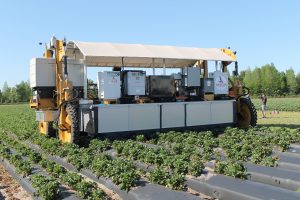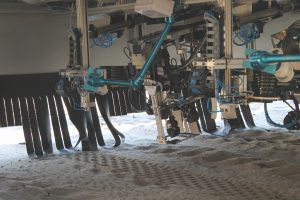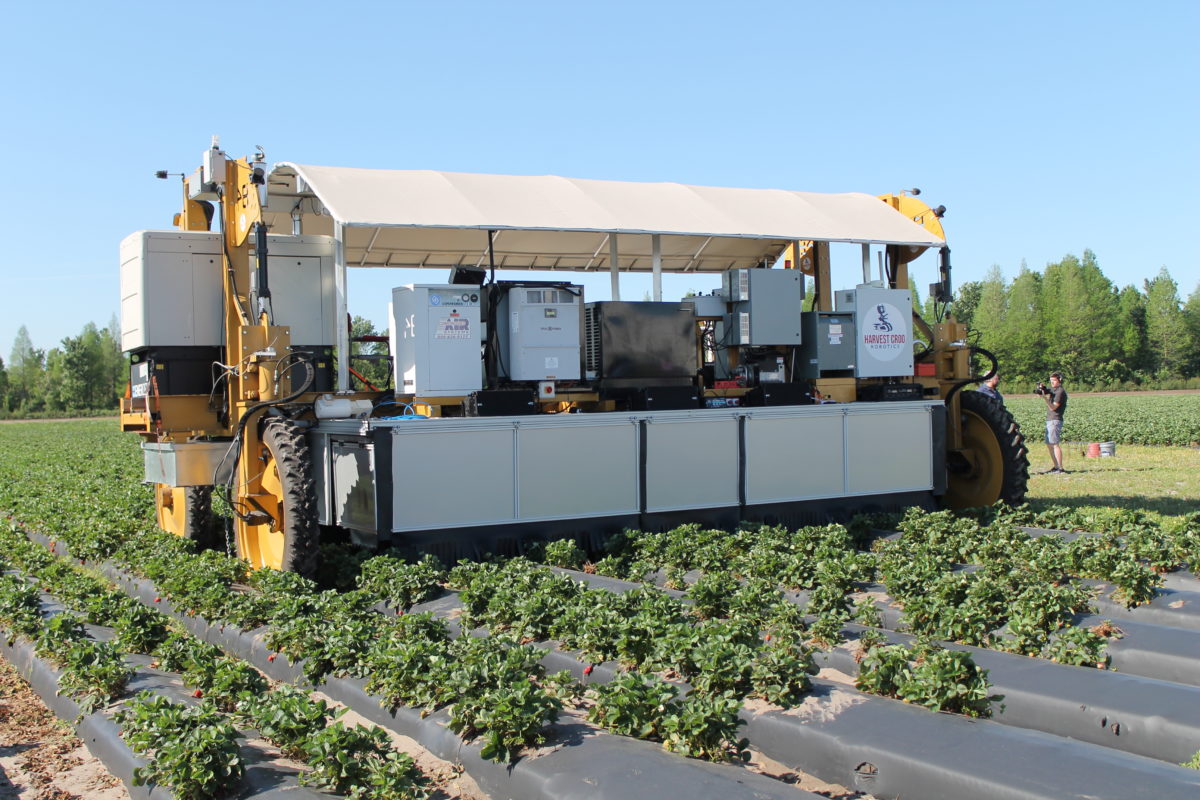
The harvester travels through the rows on an automated path. The pickers are located behind the white panels on the bottom of the machine.
Labor continues to be a pressing issue for southeastern agriculture. However, in Florida, new technology on the horizon may offer a glimmer of hope. Gary Wishnatzki, owner of Wish Farms and co-founder of Harvest CROO Robotics, is working to create a mechanical harvester that could revolutionize the strawberry industry.
LOOKING AHEAD TO LABOR
Wishnatzki said he started seeing changes in the strawberry industry’s labor force in the early 2000s when there were less workers applying to do agricultural work. He soon realized that no one in America wanted to do the difficult agricultural work, like picking strawberries at harvest time.
According to Wishnatzki, the Florida strawberry industry has mostly relied on new arrivals to the United States, because they were willing to do the difficult work. However, he knows that pool of workers will not be around forever. “They’ll do it for a generation, then they’ll move on to other jobs. They don’t want their kids picking strawberries,” he said.
Wishnatzki knows this labor strategy will not be sustainable in the future, possibly within the next 10 years. So he became inspired to give growers another option. “I knew that if we didn’t come up with an automated way to harvest strawberries, the industry’s days were numbered,” he said.
Furthermore, if America’s strawberry industry dwindles, consumers will be unhappy because berry prices will skyrocket.
Wishnatzki said Harvest CROO Co-Founder Bob Pitzer came up with the initial ideas for the harvester. Pitzer was also the leader in assembling the team to create the harvester, thanks to his connections due to his involvement in robotics competitions.

The robotic pickers are located underneath the vehicle. Once the suspension lowers, the pickers determine which strawberries are ready for picking.
HOW THE HARVESTER WORKS
The harvester is like a vehicle. The wheels automatically travel on a pre-determined path, with the robotic pickers located underneath the machine. It wheels itself over the fields of strawberries and determines which berries are ready to be picked. The suspension lowers to the strawberries, then a plastic cone collects the leaves and exposes the berries.
Once the berries are picked, the pickers place the berries in a basket. The basket full of berries then moves on a track to the top portion of the vehicle, where it empties into another bucket. That bucket will eventually fill with water, where hydrocooling techniques are used to sanitize the berries on site. So the harvester not only harvests the strawberries; it prepares them for packaging.
WORKING TOWARD COMMERCIALIZATION
Wishnatzki said once the harvester is perfected, it will cut down on virtually all labor needs in the field during harvest time. He believes the harvester will change the way the nation grows and harvests strawberries. “This technology is definitely going to be a disrupter,” he said.
The harvester remains a work in progress, so commercial availability is still a little way down the road. According to Wishnatzki, the team is currently working on a second generation of the machine, which will be tested in Florida during the next season, and then in California next summer.
After those research trials, Wishnatzki plans on building 20 machines to begin commercialization. Then, he expects to grow from there. “We believe we’re two years away from beginning the commercialization process,” he said.
To see videos of the harvester in action, visit the VSCNews Facebook page at Facebook.com/VSCNews.
This article was featured in the July issue of VSCNews magazine. To receive future issues of VSCNews magazine, click here.
Share this Post










